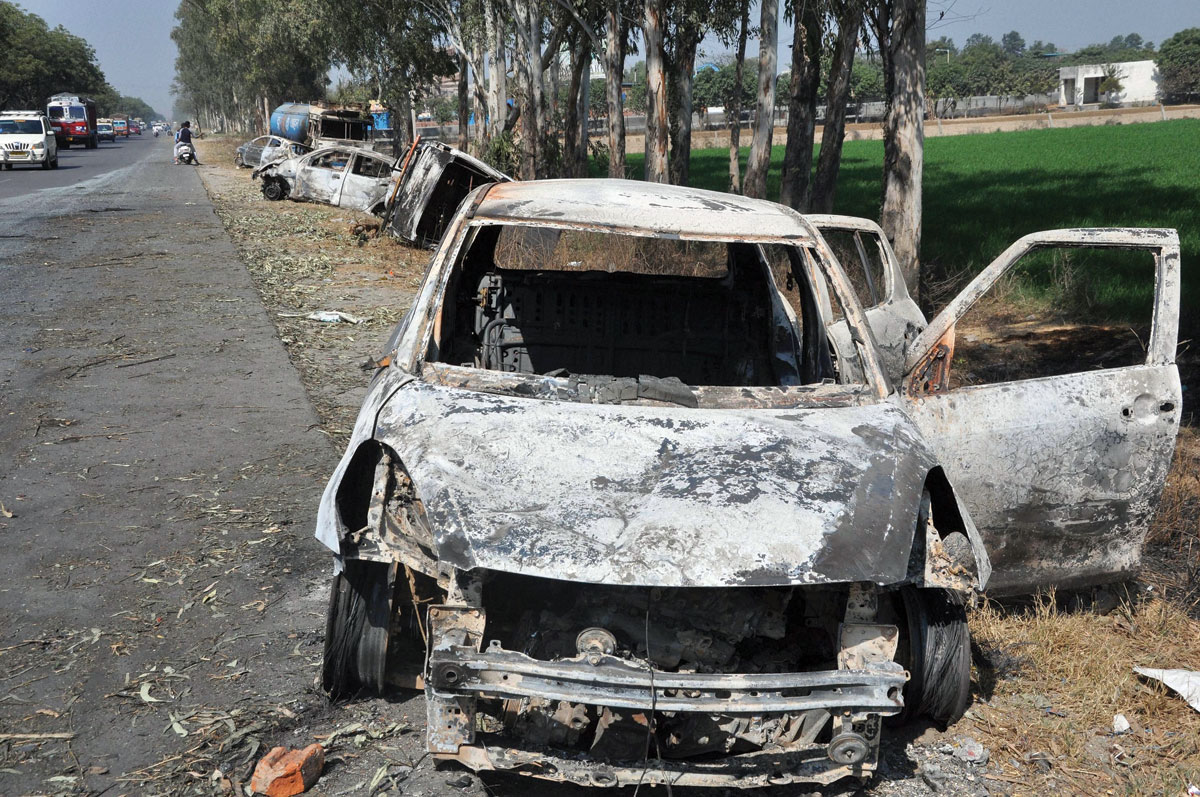ANOTHER BELLIGERENT CALL FOR RESERVATIONS
Charred remains of vehicles that were set fire by Jat protesters demanding reservations, at the Grand Trunk Road National Highway, near Sonepat, Feb. 23. (Press Trust of India)
The call for reservation in jobs and education was sounded once again by the Jat community of the northern state of Haryana in India who demanded a place in the category of the Other Backward Communities (OBC) by way of a special ordinance, writes Priyanka Bhardwaj. (@siliconeer, #siliconeer, #jatprotests, #jatreservations, #India, @narendramodi)
An extremely emotive issue, the pro-quota demand has left 19 dead, scores of others injured, about Rs.200 billion worth of property vandalized, and as per unconfirmed reports, a dozen or more raped.
Thousands of protestors stooped to looting, arson, burning down of vehicles, offices, shops, homes, malls, petrol pumps, etc., pelting of stones, blocking roads and national highways touching the states of Delhi-National Capital Region, Haryana, Himachal Pradesh, Jammu & Kashmir, and blocking of the Munak water channel, the main water supply to Delhi and Gurgaon.

As the agitation escalated and spread from the hinterland to the heart of Gurgaon, general life came to a virtual halt; 800 trains were hit, mobile Internet and SMS services stopped, factories shut down for lack of component supplies, schools were shut and airfares from Chandigarh, state capital, to New Delhi, national capital zoomed to a whopping Rs.100,000.
Unable to control the violent agitation, the army was called in to enable the state police and administration to ensure opening of main entry points of cities and water channels by clamping down the districts of Sonepat, Jhajjar, Hansi, Hissar, Kaithal, Rohtak, Bhiwani, Gohana and Jind with a curfew and issuance of shoot-at-sight orders in villages where Jat and non-Jat communities had come to a clash with one another.
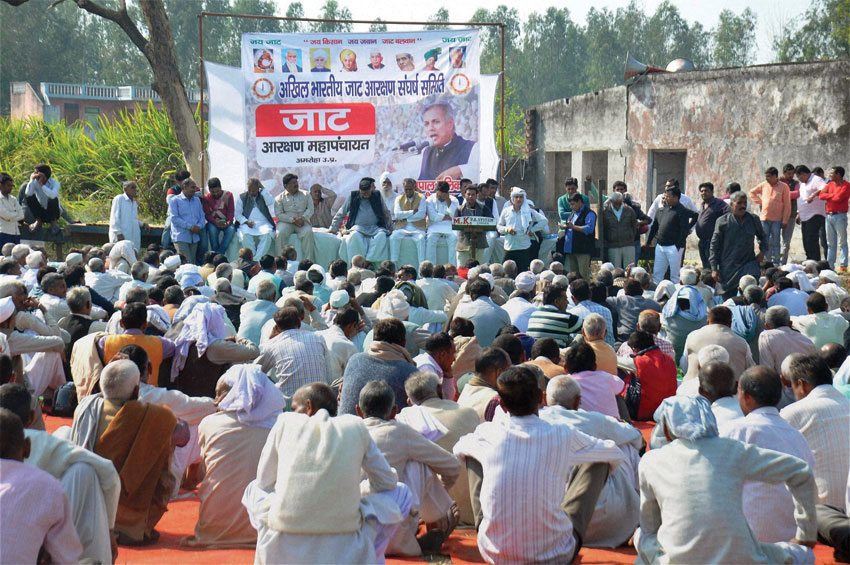
Yet the Manohar Lal Khattar-led Bharatiya Janta Party government in the state did end up allowing for a grant of special provision for reservation to the Jats within the ambit of the Constitution.
Urging the people to remain calm and appealing to protestors to end the stir, Khattar announced, “The state government would not disturb the quota of 27% reservation meant for the OBCs. The government would make a separate provision for their (Jats) reservation.”
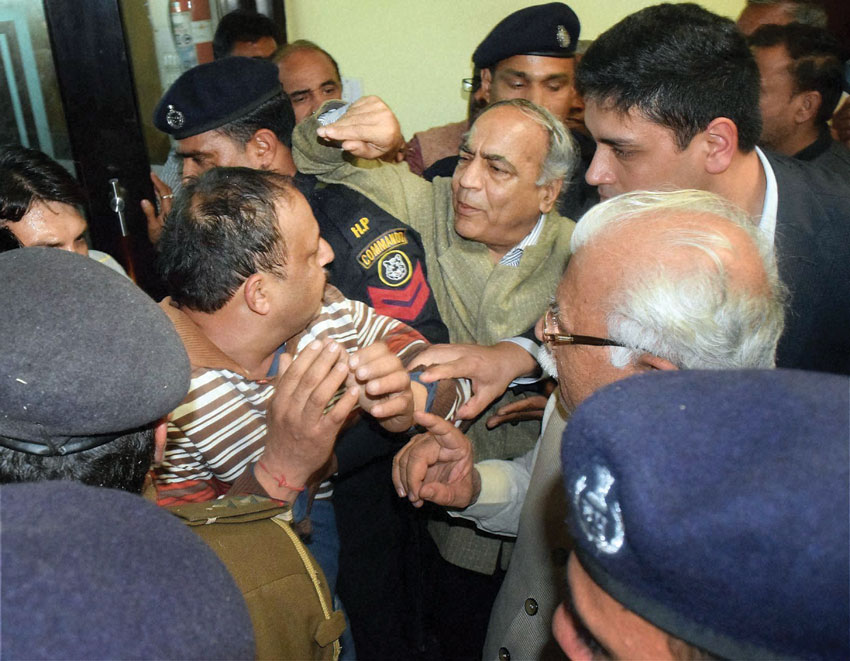
To placate those affected he also promised, “If the involvement of any person belonging to any political party or organization is found, he will not be spared. The state government would estimate losses suffered by the people after gathering full information. An ex-gratia of Rs.1,000,000 would be given to the next of kin of ‘innocent persons’ killed during the agitation after investigations. Besides, a government job would be given to one member of the family of the deceased.”
It was in December of 2015 at a meeting of All India Jat Sangharsh Samiti, presided by Jat leader Yash Pal Malik, in Sonepat, the decision for issuing an ultimatum for reservation under the OBC category to the Center and Haryana governments was planned by Jat leaders, “khap” (traditional community administrating groups) representatives from Haryana and Uttar Pradesh.
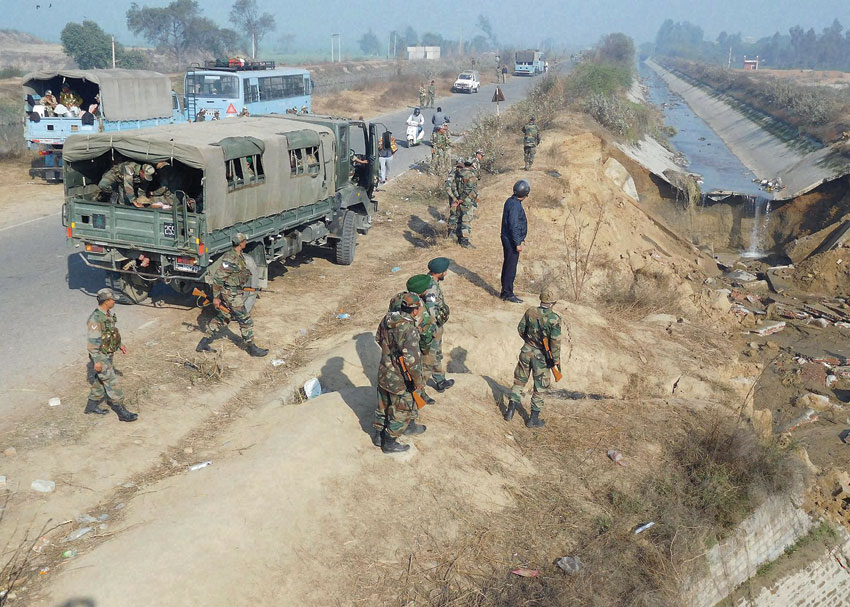
But not all villages in Haryana participated in the protests.
The “panchayats” (official local governing bodies) of about fifteen non-Jat dominated villages adjoining Gurgaon (including Nakhdola, Manesar, Shikohpur, Sikanderpur, Nathupur and Tikla) resolved to go on a stir against the demonstrators and stop them from damaging public property.
Head of Sikanderpur village in Gurgaon, Sunderlal said, “The Jats can demand for their reservation in a peaceful way but if they take to violence then we have to do something to stop it.”
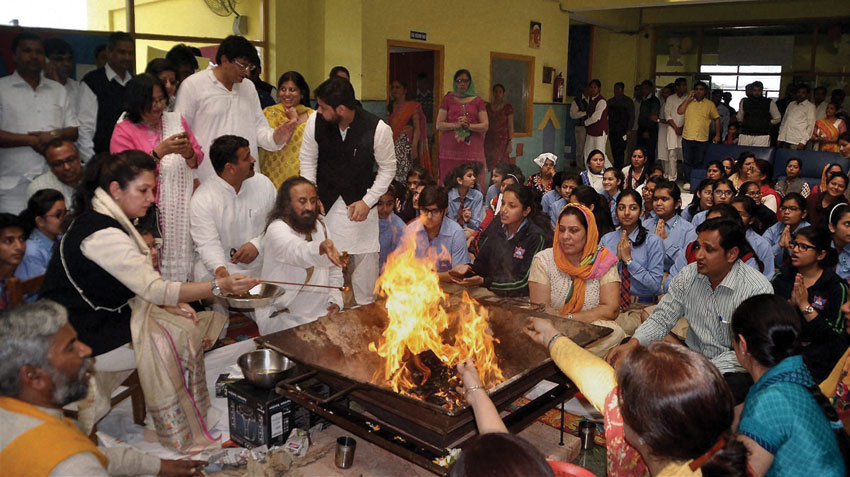
He dwelled on the baselessness of the demand for reservation juxtaposing the perception of Jats as a well to do community, driving expensive cars and having large land holdings.
Jats who are primarily landowners have been demanding to be counted amongst historically disadvantaged groups and their belligerence in 2015 did not yield any result as the Supreme Court rejected their status in the OBC list.
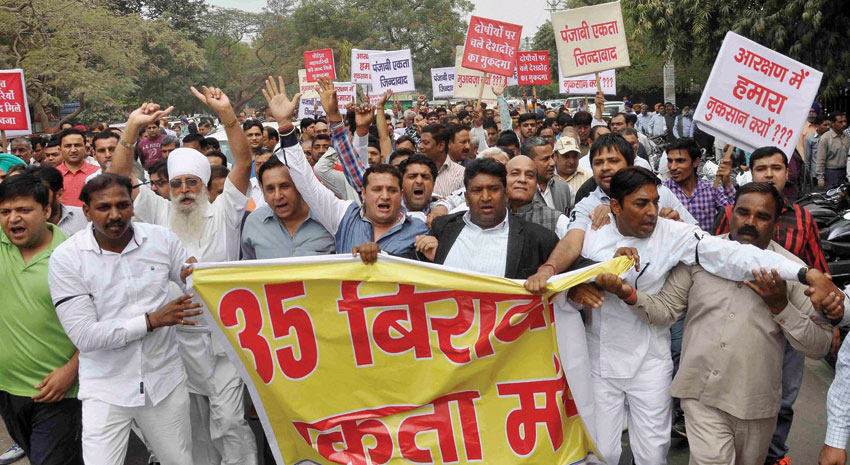
Critics argue that the protests spread like an uncontrollable forest fire and the amount of damage it caused only establishes the fact that Jats are most certainly a dominant caste in the state.
Apart from Haryana other states struggling with similar reservation demands from specific communities are: Patels agitating in Gujarat, Marathas in Maharashtra and Rajputs in Rajasthan.
Economists state that the slowdown in the country’s largest economic sector that is agriculture is a primary cause for impoverishment and embedding insecurities attached to land holdings.
In 2003-2004 the National Sample Survey revealed that land holdings have shrunk by sixty percent since 1960.
Hence more and more farmers want to give up farming for other jobs.
Constitutionally speaking, the Founding Fathers of the Indian Constitution incorporated reservation for backward castes to uplift the historically downtrodden castes and ultimately obliterate the caste system.
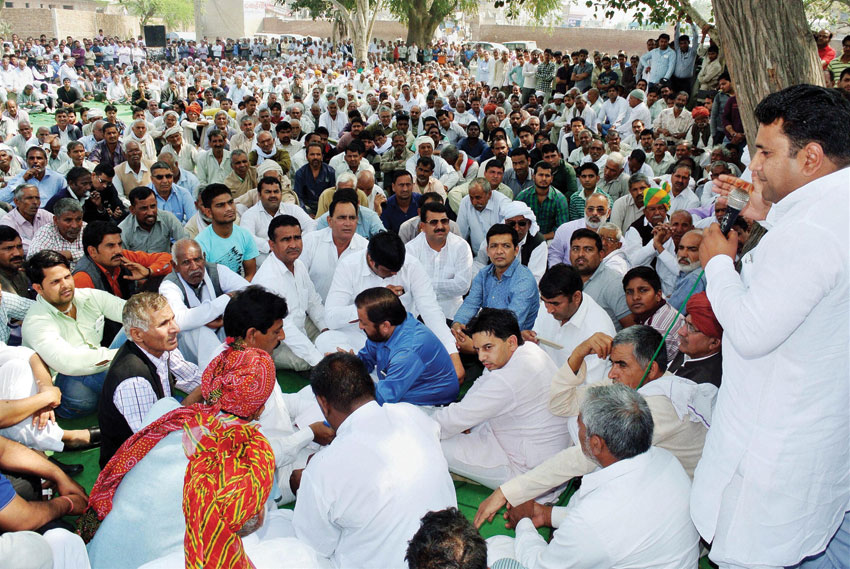
However, with the passage of time reservation system got transformed into a tool of identity politics and a means of cornering benefits by certain communities.
In 1990 the nation was a witness to how the Mandal Commission agitation pressurized the government to grant OBC status to some peasant communities.
Thus began an era of politicization of reservation and mobilization of castes around this issue.
Despite the Supreme Court ruling that the reservation quota limit is to be 50%, in Haryana the quota limit already touches 67% as the state government provides 20% reservation to the Scheduled Castes, 27% reservation to the Backward Classes, 10% reservation to the Special Backward Castes and 10% reservation to the economically backward persons.
Out of the total 90 assembly seats in Haryana and as Jats and Jat Sikhs occupy about one-third or 30 seats and make for 26% of the state’s population it is unfathomable how a government can survive without their support.
Therefore, Khattar government’s decision to declare Jats and four other castes as backward may be a way to buy them out or buy some time as the declaration will not be able to withstand judicial scrutiny argue some critics.
While the debate of reservation remains inconclusive and both the center and states can be held guilty for indiscriminately expanding the beneficiary-base of reservation apparatus, it can be wholly agreed that many times more impact will be felt by sagaciously considering the new emerging issues being faced by the Indian demography, their massive educational upliftment, removal of economic stagnation by engagement and consensus, and weeding out of anomalies of the reservation system such as removing unhealthy competition amongst members of “backward” categories.
